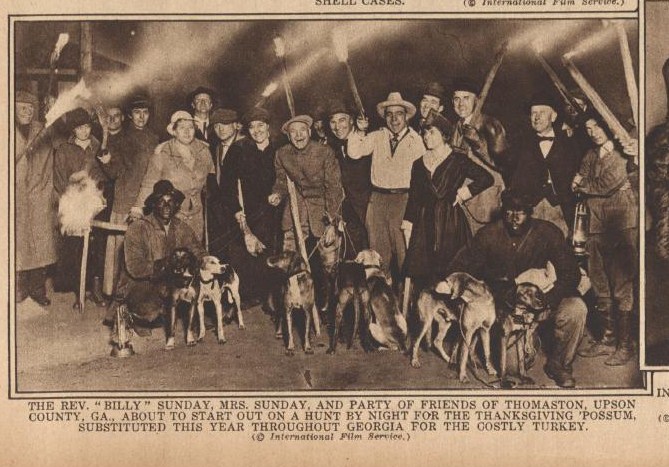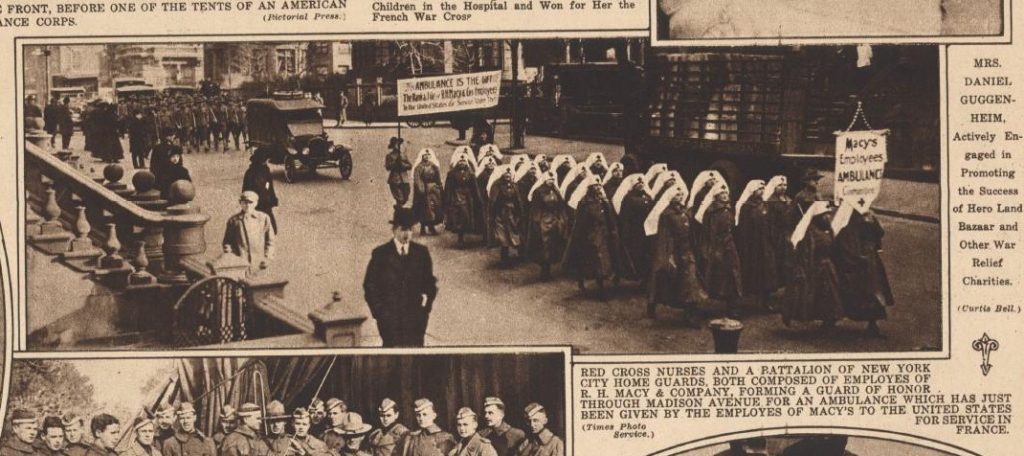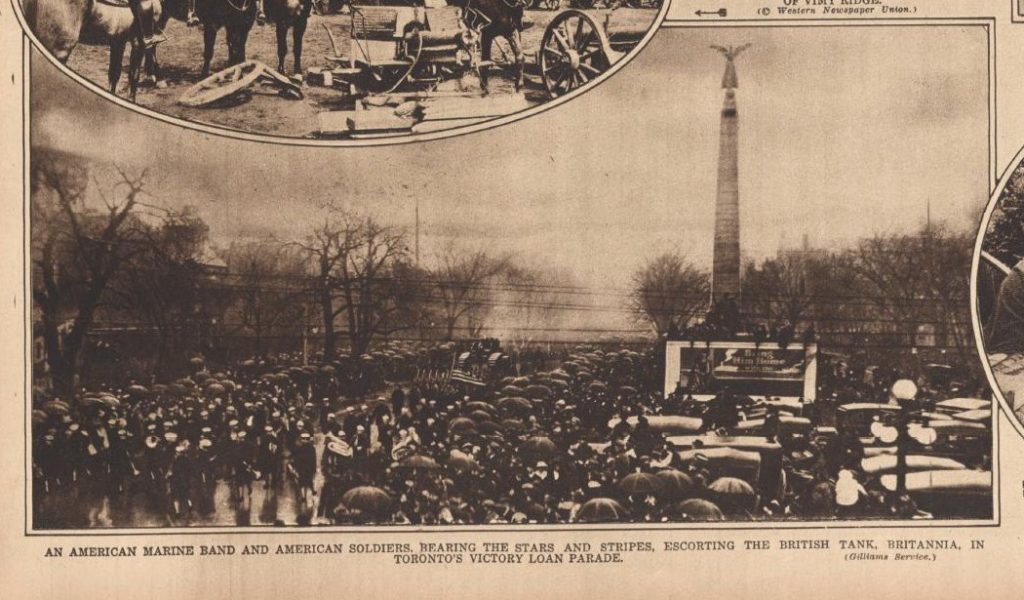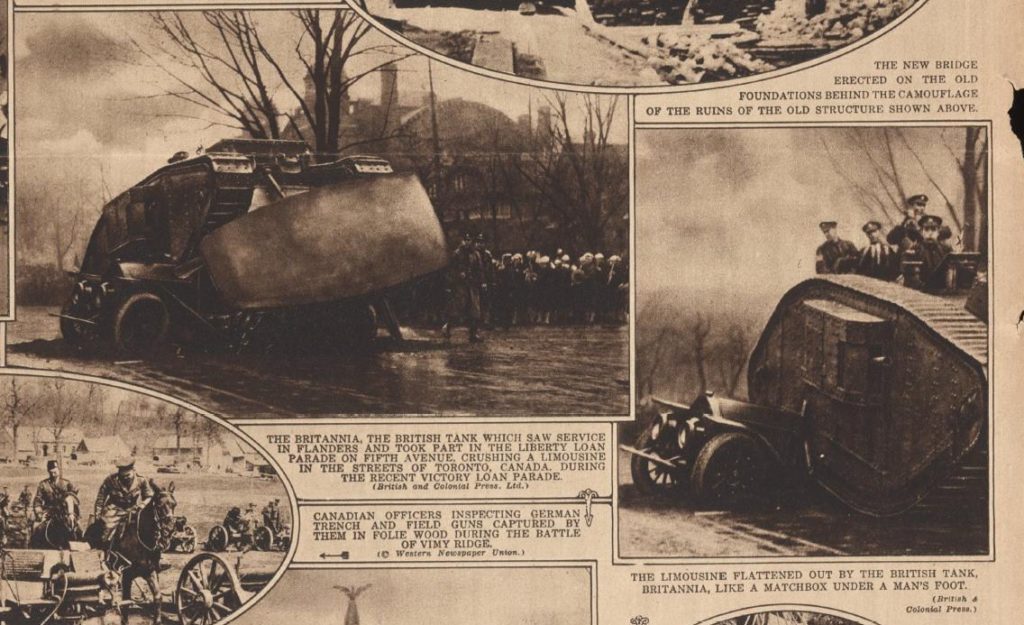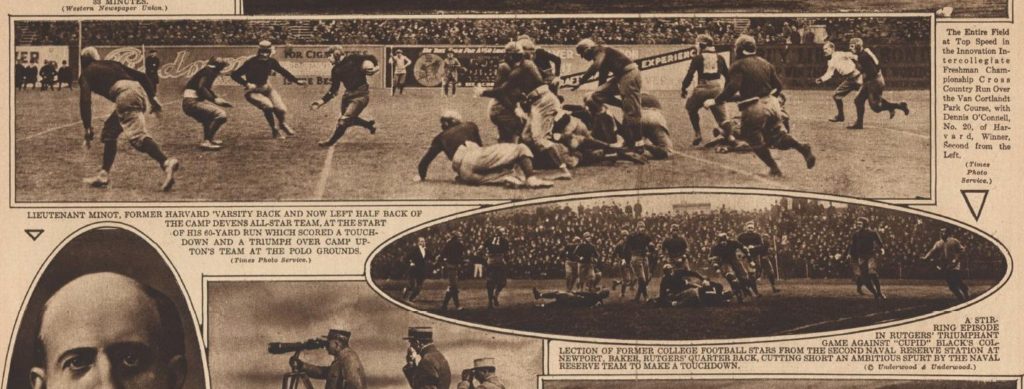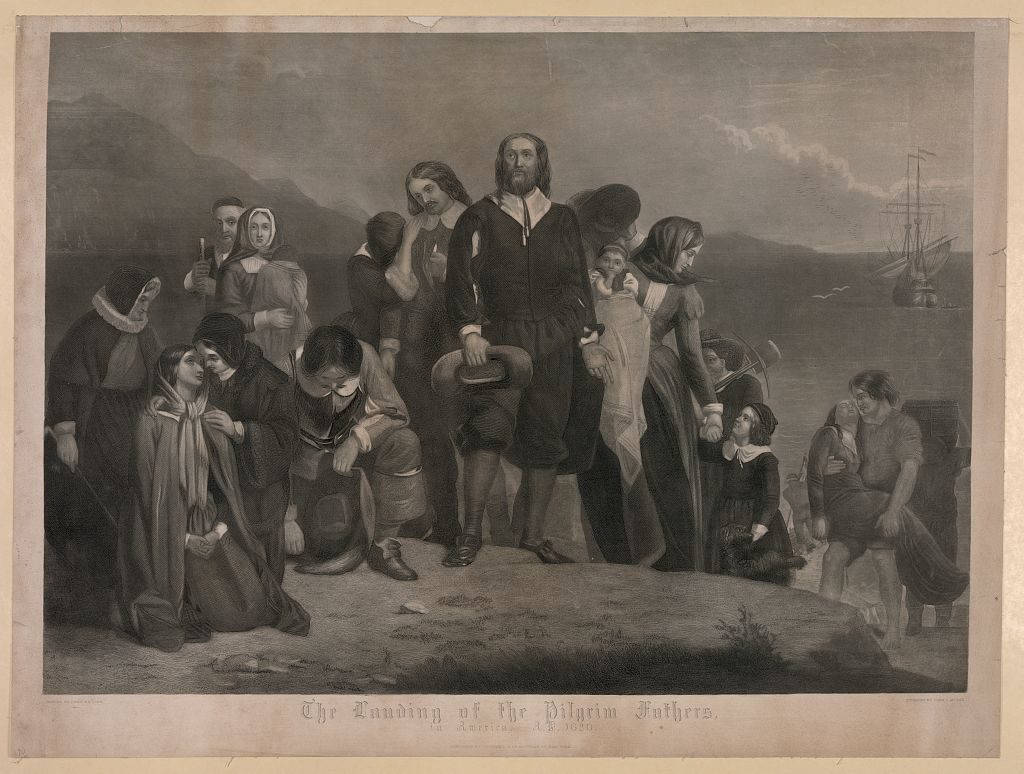A century ago some people in Georgia weren’t counting on turkey for Thanksgiving Day.
World War was raging one hundred years ago. Perusing the rest of the December 2, 1917 Rotogravure Picture Section in The New-York Times, I was somewhat reminded of Thanksgivings from my youth. Although not on the day itself, Macy’s employees marched in Manhattan; there was a stunning parade in Toronto, although I doubt Santa Claus was invited. Detroit wasn’t hosting professional American football games, but a college and military units were competing.
Thanksgiving in 1917 was on November 29th. Earlier in 1917 the United States actively entered the Great War. The Times editorial didn’t stress the first Thanksgiving as a time of peace and harmony between first Americans and Pilgrims (or the Tawnies and Whities?). The New England colonists had to be fighters:
THANKSGIVING.
Those old Pilgrims and Puritans whose Thanksgiving has passed as an inheritance to easier times often had, from the material or secular point of view, small reason enough to give thanks. “Our mercies” were often enough outnumbered by “our chastisements.” Sometimes the women and the children, and the men, were cut off by mysterious diseases, by the pitiless Winters, when COTTON MATHER’S inkstand froze by the fire in his library; by hardship, by the rough labors of winning a living from a thankless soil, by tomahawks of “the Bloody Salvages.” They fought not merely the Tawnies and the French, but the powers of Satan, as real to many of them as the Governor or the Selectmen. …
They fought the Devil and the climate. They had their ideal, harsh and intolerant as it looks to us. They kept Thanksgiving as a symbol of gratitude to “the Father of Mercies,” for what He was pleased to send of good or ill, for a narrow and toilsome life, for the accompaniment of their “pilgrimage,” in their own rigid way and for immortal hope. …
[Thanksgiving 1917 would not be as carefree and plentiful as in past years. America has finally put aside its “shameful prosperity” and taken on its enemy, “the monstrous German State.” America is fighting for “a great ideal, for justice, liberty, democracy.” The patriotic response to the war is helping to ease divisions. “Many in origins, one in duty.” Great suffering lies ahead, but the victory will be worth it.]
That the victory is for no selfish, material end, that it will be the victory of liberty and democracy, the close, we hope, of war for offense and dominion; that the Americans are one in purpose and in hope; that the meanest among us gets some tinge of the great patience, resolve, and heroism of the hour; that at last America is American – these things, amid all the darkling spectacle of human destiny, amid ruined nations and sorrow infinite, are cause for thanks. We have turned our backs to childish things. Duty and honor, courage and labor, are better masters than pleasure and moneymaking.
The war didn’t exactly wipe out all divisions in the United States, as pointed out by Stephanie Hall in an article for the Library of Congress: “Trench Blues”: An African American Song of World War I

